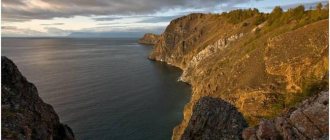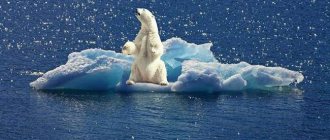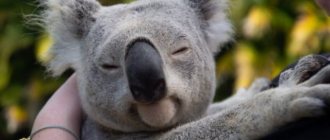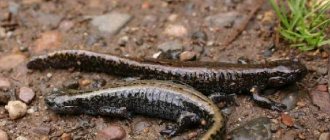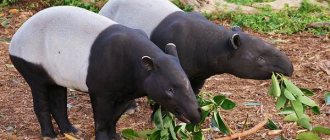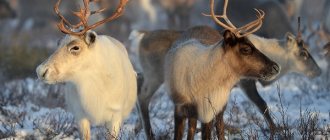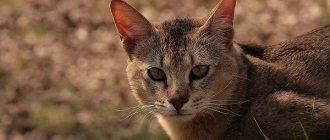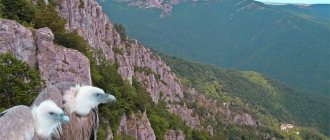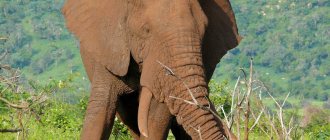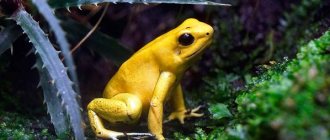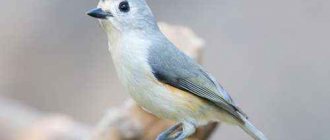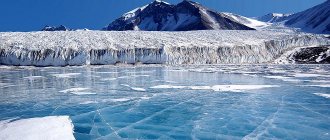Book | Video | About the project | Contacts | Sitemap | Forum | Blog | Construction | Eng
Home > Taiga articles > Animals of the taiga. Inhabitants of the northern forests
The article presents all the animals of the taiga, one way or another connected with the climatic region of the taiga. The fauna of the taiga has a certain hierarchy, in which the stronger absorb the weak - weak animals provide food for stronger predators. I have compiled a complete list of animals living in the taiga, both dark-coniferous and light-coniferous. A complete overview of the inhabitants of the northern forests of Eurasia and North America, starting from the strongest, largest and ending with the smallest. The list will not include insects, earthworms and other small inhabitants of the taiga. I will not compose this article according to the model of classical encyclopedias, but will write only what I consider necessary. What seemed to me the most important and interesting for getting to know the animals of the taiga.
Bear
The most famous inhabitant of the northern forests is the bear. If only brown bears live in the taiga of Eurasia, then in the forests of North America there are also black bears - baribals . The bear can rightfully be called the king of all animals of the taiga for its large size and physical strength. However, in everyday life, bears are very lazy and cowardly. In 99% of cases, bears avoid meeting a person or even some other animal because they do not want unnecessary conflicts. Bears most often attack people in two cases. This is either a connecting rod bear , or a mother bear with cubs. In the first case, the bear, accustomed to eating mainly vegetation, looks for food and does not find it in the winter forest, so it switches to what is available, i.e. for meat. And if he comes across a person entering the forest, then the bear may not deny himself the pleasure of feasting on this dish. In fact, connecting rod bears often begin to hunt other animals themselves. Having smelled the scent of a person, the bear will hunt him. The she-bear is dangerous as a protector of her offspring. Her maternal instinct of protection simply turns on, and any living object potentially poses a danger to the cubs.
| Black bear Baribal | Brown bear cubs |
The bear is an omnivore; its diet varies depending on its habitat. For example, the North American Grizzly, like Kamchatka bears, reaches large sizes by eating fish. You've probably seen many photos of bears fishing in a stream. In places where there is a lot of fish, it is not difficult for bears to catch it. But bears living in central Eurasia are usually much smaller in size, since they usually feed on plant foods: berries, herbs, etc. Bears also love to eat carrion, after which Trichinella larvae penetrate their meat.
Male bears always live alone, while the female always walks separately from the male along with her cubs. Due to the fact that a male can afford to attack the cubs of some other male, female bears try to mate with as many males as possible living in nearby territories. In this case, the male will think that these cubs may be his, and will no longer attack them.
There have been cases when bears came to the camp with overnight tourists in search of food. These meetings can end sadly, so in places where the bear population is large (Kamchatka, Alaska, Yukon), people hang everything edible high on a tree at a sufficient distance from the camp. Also, all food is cut up, cooked and consumed away from the camp.
They hunt bears, as a rule, from a storage shed or in a den (in winter). According to the rule, it is very difficult to meet a bear in the forest, because... he tries to avoid unnecessary encounters; hunting with pursuit of a bear is a losing option in advance. Therefore, they hunt the clubfoot from ambush. Moreover, this ambush is made in a tree and their smell is carefully masked, since the bear, like all wild animals of the taiga, has a very well developed sense of smell, and he can already sense the slightest odors, and therefore, he will be afraid and will pass by. Most often they hunt not for meat, but for skin, bear fat and bear bile - the most valuable products of traditional medicine.
The common viper is the only European taiga snake
Photo: Daniel Jablonski
The taiga is not a particularly suitable habitat for reptiles, and for this reason relatively few reptile species live in the cold northern forests. One of the reptiles that still manages to settle in the taiga is the common viper. Scientific name: Vipera berus. This species is found further north than any other species in the snake kingdom.
The common European pit viper can be identified by the dark "zigzag" pattern running down its back. Although this species is poisonous, its bite rarely poses a serious threat to life.
Elk
Many people think that the most dangerous animal in the taiga is the bear, but this is not so. The most dangerous is the elk. Namely, a male elk during the rutting period (“mating season”). At this time, the male, intoxicated by male sex hormones, becomes inadequate in his behavior and he perceives any living object as a competitor. An elk nursing a female is not interested in someone else nursing his chosen one - well, that’s understandable (who would want to?). And therefore his aggression is very great . He simply attacks on the fly, indiscriminately. It hits its potential competitor with its front hooves, and if it is a person, then it has practically no chance. The blow of this giant (from 300 to 650 kg) is very strong, and therefore meeting with an elk during the rut is very dangerous. The rutting period lasts in the fall, September-October. The males with the largest horns are the most attractive to females. You say: because such a male seems stronger? Wrong. The female thinks that if this male has such large antlers, it means that he was able to get so much food for himself, compete so much for this food with other moose, that he was able to grow such large antlers for himself. This means that he will be able to get a lot of food for her future offspring, and the offspring will be healthy and strong. Compared to people, women are more likely to prefer a wealthier man to a less wealthy one.
| Elk in winter, breaks off branches | Moose cow with elk calves |
The elk feeds exclusively on plant foods, as do cows and deer. Elk belongs to the deer family and the artiodactyl order. Moose eat branches of bushes, trees, mosses, lichens, edible mushrooms, and various herbs. They like to live in mixed forests with dense undergrowth, with an abundance of aspen and birch trees. In this way, the elk eats about 7 tons of food per year. Moreover, in winter he eats less, but saves energy.
Moose have well-developed hearing and sense of smell (like all animals of the taiga), but their vision is rather weak. A person standing motionless may not be noticed at a distance of a couple of tens of meters. In principle, it is a rather peaceful animal: if you do not provoke a conflict, the elk is unlikely to attack a person first.
Gamekeepers and hunters build special salt licks for moose - moose willingly lick this salt. They also approach highways and lick salt from highways. Moose live to be 20-23 years old when living in the wild. However, moose, like all artiodactyls, are also kept in captivity, raised on special farms.
Siberian chipmunk
This is the only species of chipmunk found in Eurasia. It is common in the taiga, especially in cedar forests. The chipmunk has an elongated body 12-17 cm long and a fluffy tail 7-12 cm long. The weight of this animal is 80-110 g. The chipmunk is diurnal and hibernates in winter. It feeds on seeds of trees and plants, buds, berries, and insects. In August of each year, chipmunks begin gathering supplies for the winter. They carry the harvested seeds in their cheek pouches over long distances, sometimes more than a kilometer.
Deer
In the northern forests, red deer are usually found. In the coastal taiga it is wapiti, in the forests of Altai it is red deer, and in North America it is wapiti. Deer feed on plant foods. The diet is varied: various herbs, mushrooms, berries. Eats pine, fir, and cedar needles. Due to the lack of minerals in the body, deer love to lick the ground, which has a lot of salt, and willingly approach salt licks specially prepared for them. In winter, animals are forced to eat almost all day long to replenish their energy reserves. In the wild, a deer lives on average up to 20 years, reaching sexual maturity at 5-6 years of age. Horns on young males begin to appear after about a year.
| Male and female red deer | Fawns are frolicking |
Like all artiodactyls, red deer are widely bred in captivity. For the peoples of the far north, red deer are the only source of life. All parts of this animal are used. Deer meat is tasty and does not contain parasites due to the fact that deer do not eat carrion or other animals. Venison is supplied to the Russian market from the Yamal-Nenets Autonomous Okrug. The growth of horns continues on average until 12 years, then the horns become old, the number of processes decreases, and the horns weaken.
Young deer antlers (antlers) are of great importance in folk medicine. In Altai, deer have been bred specifically for their horns for many years. Antlers are cut off from live deer; when cut down, the antlers begin to bleed. The hydroalcoholic extract of deer antlers is used as a tonic, and preparations are made on its basis. Pantocrine is a drug used in complex therapy for neurasthenia, asthenia and arterial hypotension.
Deer hunting is prohibited in many places, and therefore they are hunted mainly by poachers. In addition to humans, the enemies of red deer are wolves, which attack them in packs. The deer try to resist with the help of their hooves and antlers, but, as a rule, the wolves rip open the deer's lower abdomen, and it dies.
There are almost no large invertebrates in the taiga
The species richness and total biomass of soil organisms in the taiga is significantly less than in lower latitudes. The predominant soil organisms are protozoa, nematodes, rotifers and tardigrades. These organisms live mainly in the water film of the soil. The soil fauna of the taiga is distinguished by the fact that it usually lacks large invertebrates such as millipedes, springtails and earthworms, especially in the middle and northern taiga. Larger soil invertebrate animals crush up pieces of leaf litter in forest soils and pass them through their intestines. As a result of such activity, the soils of the taiga biome are characterized by a thick layer of only partially decomposed plant material accumulated over several years.
Musk deer
Another representative of deer-like artiodactyls. Musk deer live in the Far Eastern taiga. Prefers dark coniferous taiga, with stone placers and outcroppings of rock outcrops. Runs well and jumps incredibly well. She is capable of changing the direction of travel by 90° while galloping, without slowing down. Fleeing from its pursuer, the musk deer, like a hare, confuses its tracks. It feeds on fir and cedar needles, lichens, and various grasses. The musk deer's diet is strictly vegetarian. Collecting food, the musk deer can climb an inclined tree trunk or jump from branch to branch to a height of 3 - 4 m. The musk deer has many natural enemies. In the Far East, its main enemy is the kharza, which hunts musk deer in families. A lynx often lies in wait for a musk deer while feeding, and is pursued by a wolverine and a fox. Their lifespan is only 4 - 5 years in nature and up to 10 - 14 in captivity.
| Musk deer in the mountains | Musk deer calf |
On the belly of the male musk deer there is a musk gland filled with a thick, pungent-smelling brown-brown secretion. One gland of an adult male contains 10 - 20 g of natural musk - the most expensive product of animal origin. The chemical composition of musk is very complex: fatty acids, waxes, aromatic and steroid compounds, cholesterol esters. The main carrier of musky odor is the macrocyclic ketone muscone. Volatile components of musk carry information about the age and condition of the male and can accelerate estrus in females.
Musk is widely used in oriental medicine today. In China, it is included in more than 200 drug prescriptions. Experiments conducted in India showed that musk has a general stimulating effect on the heart and central nervous system, and is also effective as an anti-inflammatory agent. In Europe, musk as a medicinal product is not particularly successful, but here it has found another use: in the perfume industry as an odor fixer.
Flying squirrel
She is capable of making gliding jumps from one tree to another. Its body length is 12-23 cm, weight - about 150 g. The flying squirrel has no wings, but thanks to thin folds of skin between the front and hind legs, it can fly about 50 m. In flight, this squirrel uses its tail as a rudder to follow the direction she needs. When landing, it sharply arches its tail and body, so it lands on the surface very softly. The flying squirrel lives in tree hollows, where it makes a nest of dry grass and lichens.
Roe
An artiodactyl animal of the deer family. Two species of roe deer live in taiga forests: the European roe deer, which only slightly covers the taiga region, and the Siberian roe deer. The habitat mainly depends on the height and duration of the snow cover. The critical height of snow cover for the Siberian roe deer is 50 cm. The Siberian roe deer avoids areas where snow of this height lies for 230-240 days a year. The roe deer enters the taiga only when there is deciduous undergrowth, and mainly lives in mixed forests.
| Roe deer in the winter taiga | Baby roe deer |
As the best feeding areas, it prefers areas of light sparse forest with rich shrubby undergrowth, surrounded by meadows and fields, or (in summer) tall grass meadows overgrown with bushes. It is found in reed fields, in floodplain forests, in overgrown clearings and burnt areas, in overgrown ravines and ravines. Compared to Siberian ones, European roe deer are practically sedentary and do not make mass seasonal migrations. It feeds on plant foods rich in nutrients and water. Young shoots (low in fiber) are most preferred. Dry and highly woody parts of plants, hard grasses and sedges, plants containing toxic substances (saponin, alkaloids, phenols and glucosides) are usually not eaten or eaten reluctantly.
To compensate for the lack of minerals, roe deer visit salt licks or drink water from springs rich in mineral salts. During pregnancy and lactation in females and horn growth in males, the need for minerals increases by 1.5-2 times. Water is obtained mainly from plant foods, but if there are bodies of water nearby, they regularly visit them; In winter they sometimes eat snow. The daily need for water is small and amounts to about 1.5 liters per day.
The inhabitants of the taiga are excellent opportunists
Animals that live in the taiga must be hardy and adaptable: long, cold winters mean there is little food for much of the year and the ground is often covered in snow. Adaptations for life in the taiga include:
- hibernation during the coldest periods of the year;
- migration during the winter months;
- the presence of a thick layer of insulation;
- food supply in summer and autumn for wintering.
Nature has endowed few creatures with the above-mentioned features of anatomy and behavior, so that only a small part of the animal biome can call the taiga their home.
Boar
Basically, wild boar lives in warmer regions and is found even in the subtropics and tropics. But it can also be safely called a representative of the animal world of the taiga. The wild boar is the ancestor of our domestic pigs and pigs, but is a strong, powerful and very aggressive animal. An encounter with a wild boar in the taiga can cost a person his life under certain conditions. It grows to unprecedented sizes; the body length of some individuals is, to be honest, about 4 meters. There are trophy photos of hunters with giant boars on the Internet. But on average, a boar weighs about 175-200 kg, body length 1.5 - 2 meters.
| Boar in the forest | Baby boar |
The wild boar is omnivorous. And you can safely notice that this comrade loves to eat quite well. It feeds mainly on plant foods, but eats various small rodents and carrion. Wild boars prefer areas rich in various puddles and ponds. They love to wallow in these puddles and mess around in the mud (pigs). A rather clumsy animal, but it runs quickly and swims well. Hearing and smell are well developed, vision is rather poor. Boars are cautious but not cowardly: when irritated, injured or protecting their young, they are very brave and dangerous due to their strength and large tusks. They can also visit fields of potatoes, turnips, and grains, causing harm to agriculture, especially by tearing up and trampling crops. They often damage young trees. Very rarely, wild boars attack fairly large animals, sick or wounded, for example, fallow deer, roe deer, even deer, kill and eat them.
It is an object of sport hunting. Before being eaten, boar meat must be checked in a special laboratory (as well as bear meat) for the presence of capsules with Trichinella larvae. There are frequent cases of human infection with trichinosis after eating boar meat.
Taiga cannot boast of a variety of insects
The taiga lacks the complex assemblages of invertebrate predators and parasites that serve as stabilizers of insect populations in warmer regions. As a result, northern insect populations sometimes increase rapidly during the summer. Perhaps the most famous examples are mosquitoes, swarms of which sometimes turn into blood-sucking clouds, especially in the wetlands of the taiga. These mosquitoes can be a nuisance, but they are also a valuable food source for many birds and other native animals. Although winter cold kills all adult mosquitoes, their eggs can survive in the icy water, ready to hatch in the spring.
Coniferous trees provide a home and food source for a variety of wood-boring beetles, spruce beetles, and bark beetles. Various lepidoptera (moths and butterflies) have adapted to feeding on the leaves of taiga trees.
Wolf
The wolf is the most favorite animal of the taiga for many people. Many people like to put images of a wolf on their avatar and simply associate wolves with something beautiful, endowing wolves with nobility and even magical powers. But in fact, wolves are far from being as white and fluffy as many people see them. But lone wolves simply practically do not exist; they are very rare in the taiga. Wolves are pack animals; they gather in packs and have been doing so for many thousands of years. In a pack, it is simply easier for wolves to survive and get food in the frosty climate of the taiga than alone. Lone wolves, or rather families of wolves, are found in places where there is an abundance of food, and they no longer need to gather in a pack. But most often the wolf lives in a pack. And there is no nobility here. The pack is a strictly organized totalitarian society with its own hierarchy. There is a leader to whom all other individuals obey, there are average wolves and the lowest ones - outcasts. Such outcasts are not driven away, but treated extremely poorly, but it is still easier for an outcast to survive in a pack than alone.
| Black Wolf | Gray wolf cubs |
Of course, wolves are very aesthetically pleasing in appearance because of their beautiful fur, but there is no nobility in them. They attack prey only in packs, and therefore a lone wolf is not dangerous. Wolves are most dangerous in winter ; most often it is in winter that they attack people or livestock in villages. Black wolves are considered the most evil.
To hunt a wolf, you don’t need to buy tickets for crazy amounts of money, like, for example, for an elk. Hunting for wolves is always welcomed by hunting enterprises, because when the wolf population has grown in a particular region, wolves begin to attack domestic animals and people. Hunting farms organize special round-ups in which any hunters take part.
So, wolves are dangerous in the winter when attacked by a pack. Such a pack can be dangerous for both bears and moose. Wolves are most dangerous for moose in the spring, when the moose walks along the collapsed crust and moves slowly. The wolves attack him, and he can do nothing - death cannot be avoided.
Wolves also feed on carrion. Well, judge for yourself: if they find a fallen animal, here’s a piece of meat for you! And there are options: either eat this piece of meat, or go hunting further, wasting energy, strength, and it is still unknown whether or not to get food for yourself. Therefore, up to 97% of the wolf population is infected with parasites, in particular Trichinella. Wolves' meat is not eaten.
Taiga hare - master of camouflage
Since snow cover is a constant feature of the taiga in winter, several mammals show obvious adaptations to it. The snowshoe hare, for example, annually changes the color of its fur from brownish or grayish in the summer to pure white in the winter, which provides it with effective camouflage.
Photo: WFranz/Pixabay
Their large hind legs are adapted to prevent the hare from sinking into the snow that covers the taiga for most of the year. The furry soles of bunny feet provide excellent grip and protection from the cold. From September, the hare's brown fur begins to turn pale for camouflage against the background of snow. In spring the reverse process is observed.
Lynx
Lynx is a rare animal of the taiga. To meet a lynx, you need to try hard. The lynx population is not so large, and it does not live in all places in the taiga. Unlike wolves, I would really reward the lynx with nobility. Lynxes do not gather in packs and hunt alone. Lynxes are self-sufficient and independent. They prefer to settle in the remote dark coniferous taiga and hunt fur-bearing animals: hares, etc. Many people believe that lynxes watch for their prey in a tree and then jump on top of it. This is wrong. The lynx attacks from an ambush, like all cats: having noticed prey, it quietly waits, and then makes a quick dash towards its prey. However, the lynx cannot pursue its prey for a long time - it runs out of steam after 65-85 meters of running.
| Lynx while hunting a white hare | Lynx kitten |
Unlike many taiga animals, the lynx has well-developed vision, which helps it when hunting. Attacks various birds, rodents and even large animals: deer, roe deer, musk deer, foxes, etc. If there is plenty of food in its habitat, then the lynx lives in one place, leads a sedentary lifestyle, but if there is little food, then it has to constantly change its place of residence, nomad, and move around. She walks up to 30 km a day.
They hunt lynx only for its skin, often with traps. Lynx meat is not eaten. The skin is highly valued and worth a lot. There is no exact information about cases of a lynx attacking a person when the lynx was lying in wait for him.
The lynx is considered one of the most tame animals. Even adult individuals caught in traps are tamed. As a result, she can become almost tame, like a domestic cat, but with the habits of a wild animal. The film “The Path of Selfless Love” was made about such domestication in the Soviet Union. This northern animal deserves much stronger respect than the forest orderlies - wolves.
Environmental threats
The greatest threats to the natural taiga zone come from human activity and climate change. Taiga trees are cut down for lumber, paper, cardboard and other purposes. The export of wood and paper products is one of the most economically important industries.
Logging of boreal forests destroys the habitat of many organisms living in and around trees, increasing the risk of erosion and flooding. The taiga soil, which is not held together by a root system, can be depleted by winds, rains or snow.
Global warming is contributing to a partial thaw of the permafrost. Since the water released from the soil has nowhere to go, large areas of the taiga are subject to flooding, which prevents normal plant growth.
Climate change is also affecting animal habitats. It forces local species to migrate further north and attracts animals from the southern regions. Some representatives of the fauna, for example Siberian tigers, are not adapted to a warm climate. Their coat is too heavy and allows them to live well in cold conditions. Non-native insects such as the bark beetle infest boreal forest trees, which subsequently die. They are capable of destroying entire forests and thousands of hectares of taiga.
Fox
The most cunning animal of the taiga is the fox. It’s not for nothing that even this expression has stuck among the people: “cunning as a fox.” This is understandable: in order for a wild animal with such a bright color to get food for itself, it simply needs to be cunning and agile. The fox has well-developed hearing; with the help of its ears, it learns that its prey is lurking somewhere nearby. In winter, the fox can clearly hear mice sneaking under the snow. The slightest rustles and vibrations are picked up by her excellent locator ears. Under a multi-centimeter layer of snow, the fox tracks down its prey, dives into it - and grabs the coveted rodent. Therefore, the fox prefers to settle more in open places, plains, ravines, rather than forests. Both in winter and in summer, it is much easier for a fox to get food in open areas than in dense forests. As a rule, foxes lead a sedentary lifestyle and do not migrate anywhere. Why go anywhere if there are mice everywhere!
| Sneaking up on a partridge | Little foxes play |
The fox is a monogamous animal and prefers to live in burrows. Moreover, she either digs holes herself or uses someone else’s. Before going to bed, he carefully checks everything in the area, then lies down and listens to various rustles. Due to the fact that the main food supply of foxes is rodents, the fox plays an important role in regulating the number of rodents. Rodents pose a danger when eating grain. But sometimes the number of foxes themselves grows to large sizes. Then the foxes begin to come to nearby villages and cities. Digging through trash heaps, climbing into plots. They like to approach tourist sites.
The fox's fur is valued, which is why the fox is a fur-bearing animal obtained by hunting. There are different subspecies of foxes, for example, the silver fox and the arctic fox, which live in the tundra. They usually hunt with traps and snares. Like all fur-bearing animals, foxes value only their winter fur. Foxes got their nickname due to their ability to confuse those who pursue them. Foxes are very careful. Therefore, it is almost impossible to track down a cheat. Hearing and smell are well developed, and upon sensing the slightest odor that heralds danger, foxes immediately change their route, which is why it is difficult to catch a fox with snares.
Relief and soils
The terrain is predominantly flat, occasionally intersected by deep river valleys. Evergreen forests are found in lowlands that were formed during the Ice Age.
The soils are poor. Due to the harsh climate, the fertile layer is very thin; large deciduous trees cannot survive here. In addition, fallen needles from trees contain dangerous acids, which, when decomposed, deplete the already poor earth.
Rice. 2. Taiga
Badger
The badger is an animal of the southern taiga; it is not found in the northern forests. It adheres to dry areas, but near reservoirs and lowlands, where the food supply is richer. The badger lives in deep burrows, which it digs along the slopes of sandy hills, forest ravines and gullies. Animals stick to their favorite places from generation to generation. As shown by special geochronological studies, some of the badger towns are several thousand years old. Single individuals use simple burrows, with one entrance and a nesting chamber. Old badger settlements represent a complex multi-tiered underground structure with several (up to 40-50) entrance and ventilation holes and long (5-10 m) tunnels leading to 2-3 large nesting chambers lined with dry litter, located at a depth of up to 5 m. .
| Badger peeks out of a hole | Badgers |
The badger's activity takes place at night. It is omnivorous, but prefers plant foods. The badger is not aggressive towards predators and humans; it prefers to move away and hide in a hole or another place, but if it gets angry, it hits its nose and bites the offender, and then runs away. It feeds on mouse-like rodents, frogs, lizards, birds and their eggs, insects and their larvae, mollusks, earthworms, mushrooms, berries, nuts and grass. When hunting, a badger has to cover large areas, searching through fallen trees, tearing off the bark of trees and stumps in search of worms and insects. However, he eats only 0.5 kg of food per day and only by autumn he eats up heavily and gains fat, which serves as a source of nutrition for him during winter sleep.
The life expectancy of a badger is 10 - 12, in captivity - up to 16 years. The badger is the object of hunting. Badger fat is used in folk medicine. It is considered a panacea for many diseases due to the fact that fat accumulates many biologically active substances that the animal needs during hibernation. Badger fat is completely absorbed by the body when taken orally. It increases emotional tone, gastrointestinal activity, is rich in vitamins and microelements, and most importantly, it is used as a bactericidal agent in the treatment of tuberculosis and other pulmonary diseases.
Author: Oleg Prikhodko
The taiga is a migration site for a large number of birds
In summer, the taiga is teeming with birds; more than 300 species use the biome as a breeding ground. However, most of them live there only seasonally; As winter approaches, up to 5 billion birds migrate from the taiga to warmer climates to the south.
Migratory species include several songbirds of the passerine and finch families, typical of shrub and forest habitats: blackbirds, flycatchers, bee-eaters, wood warblers and other small songbirds. Populations of migratory birds breeding in the taiga may be declining due to the loss of their wintering grounds in the world's tropical forests and changes or loss of temperate forest habitats along their migratory routes.
Photo: Niklas Hamann
Few species of family birds remain in taiga regions during the long, cold winters, although some make very short migrations south. Relative residents of the taiga include wood grouse, raven, nutcracker, gray jay, spruce crossbill, common hazel grouse, black-capped and Siberian tit. Birds of prey such as the barred hawk, northern goshawk, golden eagle, and great gray owl (a type of large owl) are also found in the taiga forest. An important part of their diet consists of voles, which can be distinguished from mice by their shorter, hairier tails and small ears.
Mink
This is a strong predatory animal of the mustelid family. The length of its body is from 30 to 50 cm, its tail - 15-20 cm. The weight of a mink can reach 1.5 kg. She is an excellent swimmer and prefers to stay close to lakes, rivers and streams. At the same time, the mink is very mobile and agile on land, and has the ability to easily climb trees. Its food consists of fish, shellfish, muskrats, rats, squirrels, various birds, snakes and insects.
Share link
